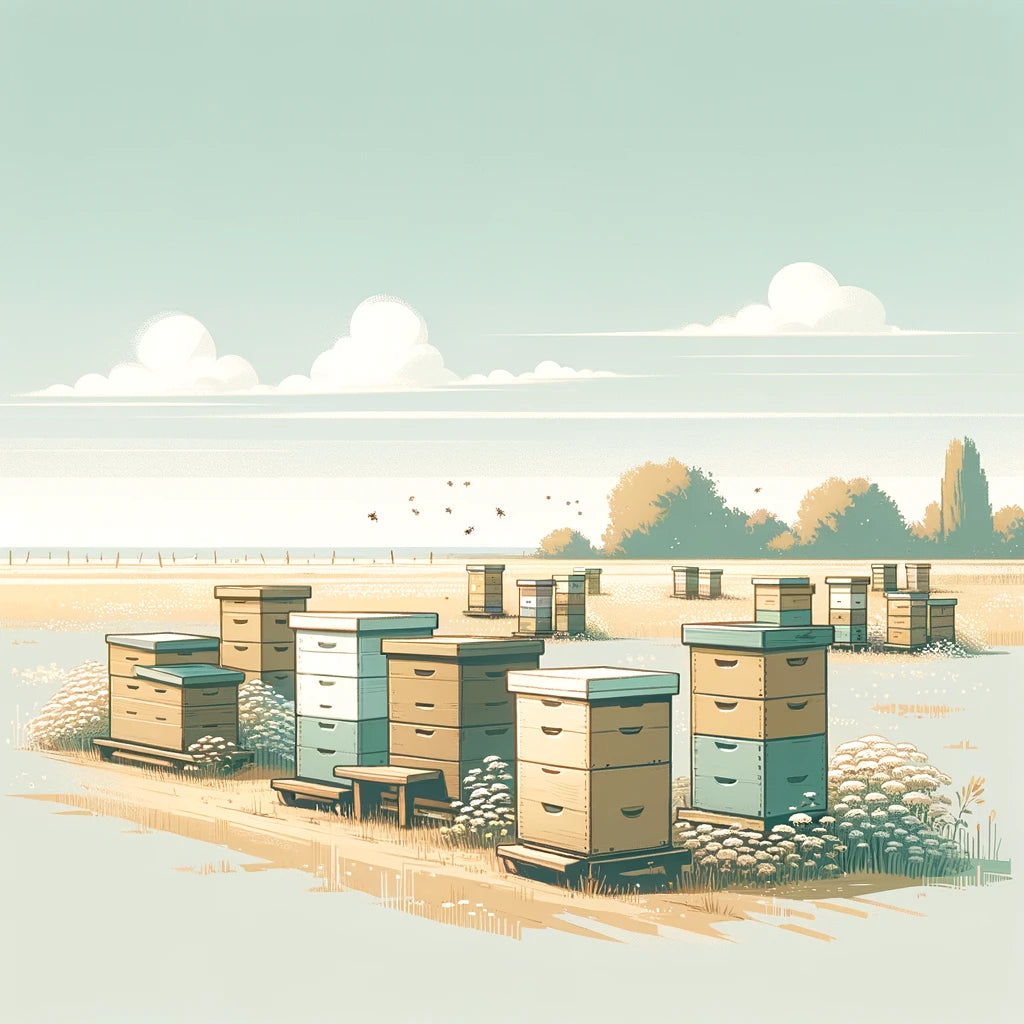
The Complete Guide to Beehive Frames: Types, Dimensions, and Maintenance
Beehive frames are a fundamental component of modern beehives, providing structural support for honeycombs and brood combs. They come in various sizes and types, each serving specific purposes in beekeeping. In this comprehensive guide, we will explore the different types of beehive frames, their dimensions, and essential maintenance practices.
Types of Beehive Frames
1. Langstroth Frames
Langstroth frames are the most commonly used frames in beekeeping. They come in three standard sizes: deep, medium, and shallow. The deep frames are used for brood chambers, while the medium and shallow frames are used for honey supers.
2. Flow Frames
Flow frames are a modern innovation in beekeeping. They are designed to allow for easy extraction of honey without disturbing the bees. The honey is extracted by simply turning a handle, causing the cells to split and drain into a collection trough.
3. Foundationless Frames
Foundationless frames do not contain a preformed beeswax foundation. Instead, the bees are allowed to build natural comb within the frame. This method is preferred by some beekeepers for its natural approach and cost-effectiveness.
4. Plastic Frames
Plastic frames are durable and easy to clean. They are often used in commercial beekeeping operations due to their longevity and resistance to wax moths.
Beehive Frame Dimensions
The dimensions of beehive frames vary depending on the size of the beehive box in which they are used. For Langstroth hives, the standard frame heights are as follows:
- Deep: 9 1/8 inches
- Medium: 6 1/4 inches
- Shallow: 5 3/8 inches
Maintenance of Beehive Frames
Proper maintenance of beehive frames is essential for the health of the bee colony and the quality of the honey. Here are some key maintenance practices:
1. Regular Inspection: Inspect the frames for signs of damage, mold, or pests. Replace any damaged frames promptly.
2. Cleaning: Clean the frames after each honey harvest to remove residual wax and propolis. This can be done using a hive tool and a wire brush.
3. Waxing: Periodically wax the frames to encourage the bees to draw out comb. This can be done by applying a thin layer of beeswax to the frame.
4. Storage: Store unused frames in a dry, well-ventilated area to prevent mold and wax moth infestations.
Assembled Beehive Frames
Assembled beehive frames are available for purchase and are ready to be placed directly into the beehive. They save time and effort for beekeepers, especially those who are new to beekeeping and may not have the tools or experience to assemble frames themselves.
Unassembled Beehive Frames
Unassembled beehive frames are also available and require the beekeeper to put them together. While this may require more effort, it allows for customization and is often more cost-effective.
Conclusion
Beehive frames are a critical element of modern beekeeping, providing the structure for honey production and brood rearing. Understanding the different types and dimensions of beehive frames, as well as their maintenance requirements, is essential for beekeepers of all levels. By choosing the right frames and maintaining them properly, beekeepers can ensure the health and productivity of their bee colonies.
General Question About Beehives Frame
1. What are the advantages of using foundationless frames in beekeeping?
Foundationless frames allow bees to build natural comb, which some beekeepers prefer for its natural approach and cost-effectiveness. These frames provide more flexibility for the bees to construct cells according to their needs, which can result in healthier comb structures and a more natural beekeeping environment.
2. How often should I inspect and clean my beehive frames?
Beehive frames should be inspected regularly, ideally during each hive inspection, to check for signs of damage, mold, or pests. Cleaning should be done after each honey harvest to remove residual wax and propolis. This helps maintain the health of the bee colony and the quality of the honey.
3. Can plastic frames be used in any type of beehive?
Plastic frames can be used in most types of beehives, but they are particularly popular in commercial beekeeping due to their durability and resistance to wax moths. They are easy to clean and maintain, making them a convenient choice for beekeepers who need long-lasting and low-maintenance frames.



Leave a comment